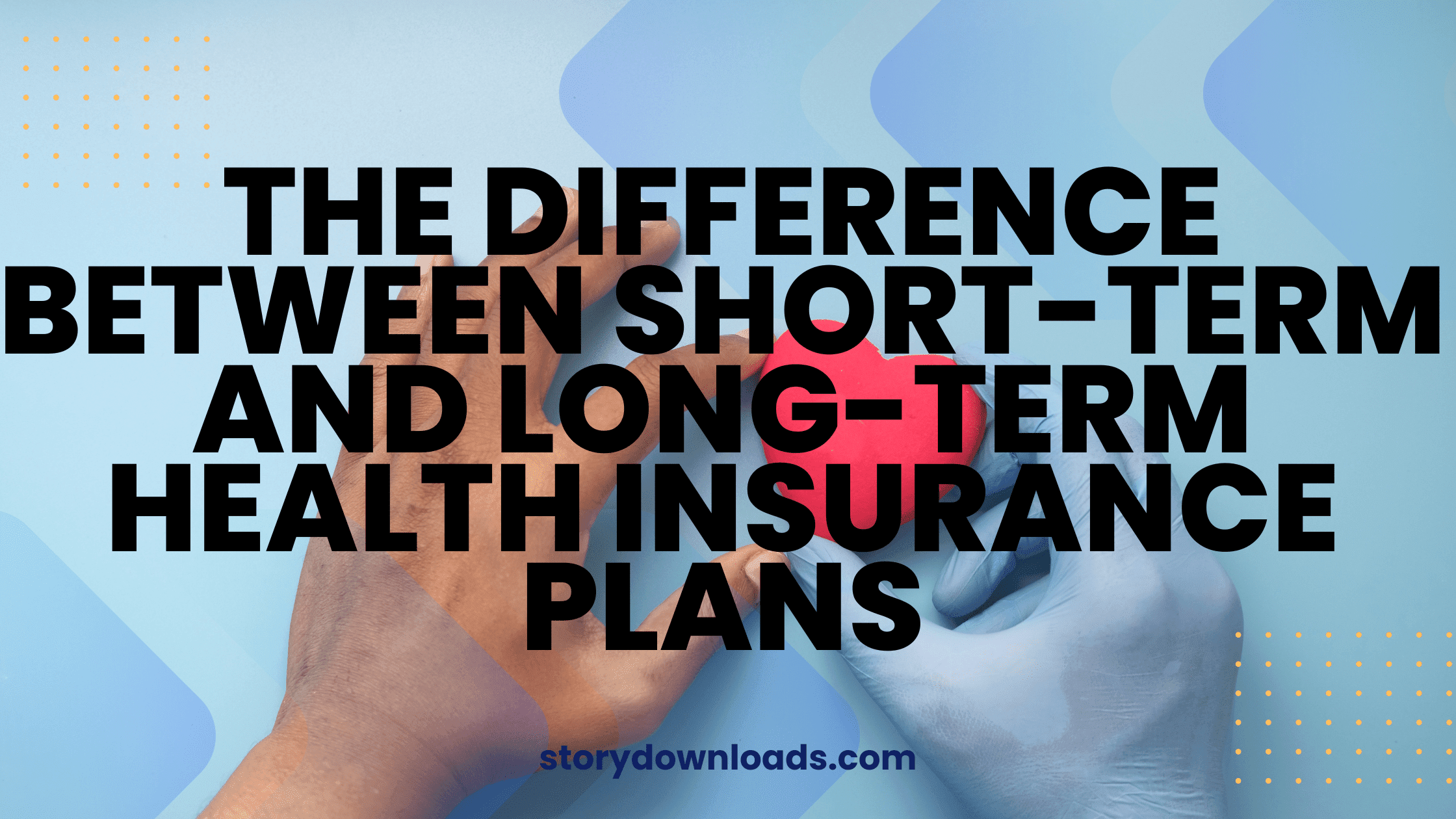Health insurance provides individuals and groups of people protection from unexpected medical expenses by covering costs such as check-ups, check-ups, prescriptions, hospital stays, surgeries, and other health-related services. By protecting you against unexpected bills while improving access to quality healthcare it can improve overall well-being and enhance quality of life.

However, not all health insurance plans are the same. There are two primary categories of plans – short and long-term plans. They vary in terms of duration, coverage costs, and features that matter for you based on your health needs, budget constraints, and lifestyle preferences; you might choose one over another depending on what suits your lifestyle best.
In this blog post, we’ll outline what short and long-term health insurance plans are, what they cover and exclude, who needs them, their advantages/disadvantages as well as tips on choosing between them with professional or expert guidance being recommended as needed for personalized advice.
What Is Short-Term Health Insurance Plan (STHIP)
A Short-term health insurance plan (STHIP) provides temporary coverage from 30 days to 12 months. It should fill any gaps between longer-term plans or cover specific situations such as traveling abroad or waiting for employment that is employer-sponsored, missing the enrollment period of an LTC plan, etc.
Short-term health insurance plans typically cover basic services, including emergency and urgent care visits, doctor visits, lab tests, and prescription drug coverage; but often exclude or limit coverage for preventive services like dental and vision care treatments, mental health treatments such as substance abuse treatment as well as pregnancy-related benefits and chronic or preexisting condition management or other essential health benefits.
Some examples of people who could require short-term health insurance plans include:
- Travelers who need health coverage while visiting another country or state.
- Students who need health coverage while studying abroad or away from home.
- Young adults who age out of their parent’s plan and need health coverage until they find their own plan.
- Unemployed or self-employed people who need health coverage until they find a new job or qualify for a long-term plan.
- People who miss the open enrollment period for a long-term plan and need health coverage until the next enrollment period
Benefits of short-term health insurance plans may include:
- Short-term plans offer cheaper premiums and deductibles compared to long-term plans.
- More flexibility with respect to the coverage period, provider network selection, and benefit levels.
- Easier application with reduced paperwork needs and eligibility requirements.
Some disadvantages of a short-term health insurance plan are:
1. Short-term plans provide less comprehensive health coverage due to the exclusion or limitation of essential benefits.
2. Non-compliant with Affordable Care Act standards and regulations as they do not meet qualifications The Affordable Care Act does not protect from tax penalties for lacking minimum essential coverage.
3. Such coverage cannot be renewed or guaranteed issue as insurers can terminate or deny coverage at any time, often unexpectedly.
What Is Long-Term Health Insurance Plan (LTHIP)?
Long-Term Health Insurance (LTHIP) plans to provide continuous coverage over an indefinite period, usually until canceled or you become ineligible to continue having coverage under them. They’re intended to give comprehensive health care to you and your family throughout their lives while helping avoid potential tax penalties associated with not providing minimum essential coverage under the Affordable Care Act (ACA).
Long-term health insurance plans typically offer comprehensive health coverage that spans preventive services to dental, vision, and mental healthcare as well as substance abuse treatment and pregnancy coverage, in addition to chronic condition management services and essential health benefits such as pregnancy care or preexisting condition care maternity. They may have exclusions or restrictions depending on factors like provider networks, benefits levels, and cost-sharing arrangements although every plan type, provider network level, or benefit may have limitations or exclusions that must be respected when making claims.
Some examples of people who may need a long-term health insurance plan are:
1. Employees or union members receive health coverage through employers or unions.
2. Self-employed people buy health coverage on the individual market or through the Health Insurance -Marketplace Retirees who obtain coverage via Medicare or other federal programs.
3. Low-income adults receive health coverage through Medicaid or state programs.
4. People with disabilities eligible for Social Security disability payments and similar federal programs.
Benefits of long-term health insurance plans may include:
1. As it provides more comprehensive health coverage than short-term plans do, including most essential benefits.
2. Long-term plans comply with ACA standards and regulations and qualify as qualified health plans.
3. Your health coverage protects you against tax penalties associated with failure to have minimum essential coverage under the ACA.
4. A guaranteed issue means it cannot be canceled or denied by the insurer based on health status or claims history alone.
Some disadvantages of a long-term health insurance plan are:
1. Short-term plans tend to be less costly because their premiums and deductibles tend to be higher.
2. They also tend to require more paperwork, and eligibility criteria and may limit provider choices depending on location, income level, and enrollment period.
3. Longer-term plans have greater costs because their premiums and deductibles are also more costly.
4. Luckily, short-term plans provide temporary coverage as an affordable solution.
How Can I Choose Between Short-Term and Long-Term Health Insurance Plans?
Selecting between short-term and long-term health insurance plans can be a complex decision involving various considerations like your needs, budget, lifestyle preferences, and individual choices. There’s no single best answer here as plans might suit different people differently. here are some general tips and factors when making this choice.
Compare costs between plans, including premiums, deductibles, copayments, coinsurance premiums, and out-of-pocket maximums as well as any applicable fees and tax implications such as credits subsidies, or penalties that might apply.
Compare coverage between plans, including what services are covered and excluded. what providers fall within and outside your network benefits offered and limited as well as potential exclusions/limitations applicable to preexisting or chronic conditions.
Compare renewability and stability among plans, taking into consideration the length of the coverage period, frequency of renewal/cancellation options, and effect of changes to health status claim history state or federal regulation plays an integral part.
Consider Your Current and Future Health Needs Carefully When planning for future health needs, such as preventive services, routine check-ups, prescriptions, hospitalizations or surgeries, or any other health services related to care needs you should also keep your family size, age, medical history lifestyle habits risk factors in mind when making this assessment.
Consider Your Preferences and Goals (PF&Gs). Consider what matters to you most in terms of flexibility versus security; whether saving money is more important are you interested in staying with your current provider or switching?
Conclusion
In this blog post, we have explored short and long-term health insurance plans in detail. detailing what they cover or exclude as well as who needs them and their advantages and disadvantages. Furthermore, we provided tips for selecting between them while suggesting consulting an expert for customized advice.
We hope that this blog post has provided you with enough knowledge to comprehend the differences between short-term and long-term health insurance plans, and how best to choose one of them. If you have any feedback, questions, or experiences to share please leave us a message in the comment box below thank you for reading!

